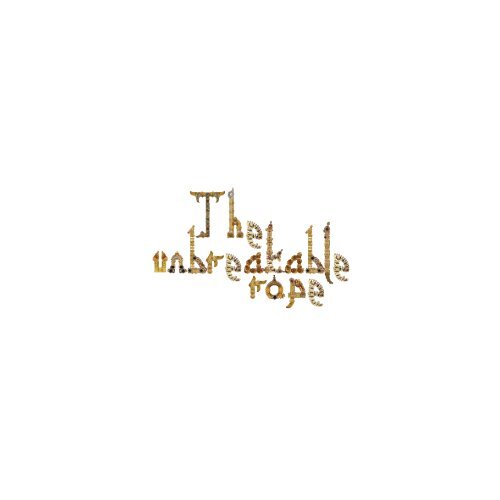The Unbreakable Rope
You also want an ePaper? Increase the reach of your titles
YUMPU automatically turns print PDFs into web optimized ePapers that Google loves.
Love in Bloom, an essay by Harry Seymour<br />
Prior to the advent of Islam, homosexual<br />
acts appear to have been commonplace<br />
in the Arabian Peninsula amongst the<br />
polytheistic nomadic peoples. <strong>The</strong> teachings<br />
of the Prophet Muhammad (570 –<br />
632 AD) effectively saw a prohibition<br />
on such acts that spread in less than<br />
a century from the Prophet’s journey to<br />
Medina (622 AD) throughout the Middle<br />
East and North Africa. Since its creation,<br />
the Qur’an has become the way of the<br />
word for Muslims, offering ethical, legal<br />
and social guidance for their public and<br />
private lives. For Muslims, the Qur’an<br />
represents the divine word – an irrefutable<br />
yet sacred governance.<br />
Several times does the Qur’an condemn<br />
homosexuality, arising from two distinct<br />
themes. <strong>The</strong> first is regarding the story<br />
of Lot and the destruction of Sodom and<br />
Gomorrah – a narrative shared with the<br />
Judaeo-Christian Old Testament. <strong>The</strong><br />
second concerns the scripture regulating<br />
the sex lives of the followers of Islam,<br />
which sets out what is permissible and<br />
what is prohibited with regards to sexual<br />
intercourse (zinā). In each case, homosexuality<br />
between men, and women<br />
(mentioned once in in Sura 33:30) is<br />
judged to be a base act (al-fahisha),<br />
which can be severely punished. This<br />
is confirmed by two often-recited passages;<br />
“If two men among you are guilty<br />
of lewdness, punish them both. If they<br />
repent and amend, leave them alone,<br />
for God is Oft-returning, Most Merciful”<br />
(Sura 4:16), and “Of all the creatures<br />
in the world, will ye approach males /<br />
And leave those whom Allah has created<br />
for you to be your mates? Nay, ye<br />
are a people transgressing (all limits)”<br />
(Sura 26:165-66). Exegetes interpret<br />
these writings with varying degrees of<br />
force, often depending on the interpretation<br />
of the historical context in which<br />
they were written. One explanation<br />
for these discrepancies could be the<br />
changes between the shorter and more<br />
forceful Meccan verses, and the later<br />
Sura revealed to the Prophet at Medina,<br />
by which time Muhammad was already<br />
the leader of a fully-flourishing society.<br />
However, despite the Qur’an’s forbidding<br />
of homosexual acts, during certain<br />
periods it has played a significant role<br />
within Islamic cultures. <strong>The</strong>re is evidence<br />
from correspondence, literature and art<br />
to suggest that a diverse spectrum of sexuality<br />
flourished at certain times and in<br />
certain pockets of the empire, including<br />
the Spanish Umayyads (756 – 1031),<br />
the Seljuks in Persia (1037 – 1194),<br />
the Malmuks in Egypt (1250 – 1517)<br />
and to a certain degree, the Ottomans<br />
in Turkey (1300 – 1923).<br />
Abū Nuwās (756 – 814) is regarded<br />
as one of the greatest Classical Arabic<br />
poets (756 – 1031), who flourished<br />
during what is seen as the Golden Age<br />
of Islam (dar al-Islam), which consisted<br />
of the Umayyad dynasty (661 – 750)<br />
in Damascus and the first period of<br />
the Abbasid dynasty (750 – 1258)<br />
based in Baghdad. This was a culturally<br />
lively and sophisticated period<br />
with opulent and cosmopolitan courts.<br />
Homosexuality was within this society,<br />
celebrated as a variant of eroticism,<br />
however roles (as often was the case in<br />
Antiquity) were defined by the passive<br />
and active participants. <strong>The</strong> older and<br />
socially superior male would normally<br />
adopt the active role, and typically the<br />
passive role would be adopted by an<br />
adolescent boy, emphasising the social<br />
hierarchy of society. During certain periods<br />
of this Golden Age, many chose to<br />
shun the traditional Bedouin lifestyle of<br />
chastity, valour and courage in battle<br />
for a focus on wine, passionate love<br />
and revelry. Biographers of the life of<br />
Abū Nuwās recount his many relationships<br />
with both women and boys, full<br />
of the flavour of this libertine spirit. He<br />
lived a bohemian lifestyle, especially<br />
during the years in which al-Amīn was<br />
caliph (809 – 13) with who Abū Nuwās<br />
shared many experiences. His Dīwān,<br />
a collection of lyrical prose, provides<br />
evidence for his heady thirst for secular,<br />
carnal life, which he said to be comprised<br />
of four elements; “flowing water,<br />
gardens, wine and the beautiful face of<br />
the beloved”. <strong>The</strong> most well known and<br />
celebrated of his erotic works are the<br />
ghazal and the khamriyyāt, which exalt<br />
wine and revelry. In his work ghazal,<br />
Abū Nuwās celebrates his love boys and<br />
young men, including epehebes (ghulām<br />
amrtad) and fifteen year olds (khumāsi),<br />
although both younger and older boys<br />
are not to be discounted, even once they<br />
have began growing facial hair (muaddir).<br />
His work compares young males to<br />
fawns, gazelles and kid-goats and his<br />
descriptions of male youth-beauty conform<br />
to those of the day: being slender<br />
and supple with smooth skin, narrow hips<br />
and firm buttocks, a face with moon-like<br />
radiance, languid eyes, pink cheeks,<br />
plump glossy lips, hair slicked back with<br />
ambergris, a clear and pronounced<br />
voice and musky kisses. Passages from<br />
his work describe the seduction of young<br />
Persian boys in taverns. Pages, prostitutes,<br />
slaves, Christians and Zoroastrians<br />
are all lured by presents and the clink<br />
of gold coins. His lyrics speak of burning<br />
carnal desires, which are sometimes<br />
accepted but often scorned, while his<br />
works range from euphoric and explicit<br />
to melancholic and ironic.<br />
Many other homoerotic Islamic authors<br />
existed during this Golden Age, in which<br />
homosexuality played a large part in culture,<br />
in part explained by the fact that<br />
Islam makes no distinction between<br />
spirit and the flesh unlike in Christianity,<br />
while also highly valuing sexual pleasure.<br />
<strong>The</strong> Persian Ibn Dāwūd (868<br />
– 909), the Andalusian Ibn Quzmān<br />
(1080 – 1160) and the Arabic-Sicilian<br />
Ibn Hamdīs (1053 – 1133) all wrote<br />
skilled and beautiful prose flowered with<br />
homoeroticism. <strong>The</strong>re are also extant<br />
practical lovemaking manuals, such as<br />
<strong>The</strong> Perfumed Garden (Ar-rawd al-atir<br />
fi nuzhatil khatir) written by the Tunisian<br />
sheikh Muhammad Ibn Umar al-Nafwāzi<br />
between 1410 and 1434, which<br />
instructs how to enjoy sex to the fullest,<br />
and <strong>The</strong> Book of the Respective Merits<br />
of Maids and Youths (Kitab mufaharat<br />
al-jawari wa-l-ghilman) written by Ūthmān<br />
al-Jāhiz (777 – 869), which discusses<br />
the pleasures of making love to women<br />
versus young boys. Many texts from this<br />
time discuss the desire of, and lovemaking<br />
to both heterosexual and homosexual<br />
partners, often in lively and humorous<br />
tones.<br />
During the Classical Age of Persian literature<br />
beginning in the thirteenth century,<br />
Sufism begins to gain popularity. Sufism,<br />
recalling the teachings of Plato, is a mystical<br />
movement that celebrates the love of<br />
absolute beauty. In these texts the loved<br />
one is exalted as making the pain of life<br />
worthwhile. Some of the most prominent<br />
Persian writers at this time were Omar<br />
Khayyām (mid-eleventh century – 1126)<br />
who writes about his hedonistic pursuits<br />
of sensuality, and Sa’dī of Shiraz (1184<br />
– 1291), who discusses his love for<br />
young males in both spiritual and graphically<br />
sexual terms. This same approach<br />
is adopted by Hāfiz (1319 – 1390),<br />
interplaying mysticism with physical<br />
beauty to create a divine union. Much<br />
like Abū Nuwās, Hāfiz talks of being<br />
intoxicated with both wine and love. <strong>The</strong><br />
most celebrated of al poets however, is<br />
Jalāl ad-Din Rūmī (1207 – 1273) who<br />
writes passionately about the wandering<br />
dervish Shams of Tarbiz. According to<br />
the American scholar Keith Hales the<br />
two were barely separated, deeply in<br />
love, and often would retreat for months<br />
at a time together in to sexual bliss.<br />
In Islamic art, references to homosexuality<br />
are exceptionally rare, especially as<br />
in Orthodox Islam depictions of humans<br />
are forbidden. Depictions of lesbian<br />
lovers are even rarer. Some periods of<br />
miniature painting saw homoerotic imagery<br />
appear, particularly in Persia under<br />
the Safavid dynasty (1502 – 1722)<br />
and in Turkey between the sixteenth<br />
and nineteenth centuries. Two painters<br />
from the court of Shah Abbas the Great<br />
(1588 – 1629) were Riza-I Abbas and<br />
Mohammed Qāsīm Mussavir who used<br />
explicit homosexual imagery, and in<br />
nineteenth century Turkey Nevi Zade<br />
Atai’s paintings contained highly explicit<br />
imagery of penetration. However on<br />
the whole homosexuality in Islamic art<br />
is historically limited to young males<br />
in salacious poses, bodies entwined<br />
and with longing gazes. An example<br />
of this is a ceramic commissioned by<br />
Shah Abbas for his pleasure palace in<br />
Isfahan in 1590, depicting four males<br />
sat by a river in a garden gazing upon<br />
one another whilst drinking wine. A hint<br />
of sexual relations comes from the gentle<br />
touching of one of the characters neck<br />
by his counterpart. <strong>The</strong> four figures reflect<br />
the concept of paradise as lyricised by<br />
Abū Nuwās; “flowing water, gardens,<br />
wine and the face of the beloved”.<br />
With the spread of the bourgeois<br />
throughout eighteenth century Europe,<br />
a cultural shift happened in the Arab<br />
empire that saw an increase in artistic<br />
censorship (especially forbidding human<br />
representation). Women were obliged<br />
to wear veils and homosexuality was<br />
scorned. In the nineteenth century the<br />
hypocrisy of the British Victorian classes<br />
caused homophobia to spread throughout<br />
the Ottoman empire, and as social<br />
tensions climaxed, sexuality became a<br />
much less free affair. Stiffening religious<br />
institutions, high unemployment and illiteracy<br />
and ingrained ideas propagated<br />
the issue throughout the decades.<br />
Of course the situation differs historically<br />
state to state as Islam is a body composed<br />
of many member nations; despite<br />
being glued by religion, these states do<br />
not share a common political, economic<br />
or social structure. Cultural outlooks differ<br />
widely not only between countries, but<br />
also provinces, towns and down to<br />
individuals. However, homosexuality<br />
is officially outlawed in every country<br />
in the Islamic world and it remains a<br />
taboo that is either silenced or denied to<br />
exist. Sodomy is explicitly forbidden on<br />
all sides; by the Qur’an, the hadith, the<br />
sunna (the rules for correct behaviour),<br />
the fiqh (jurisprudence) and the sharī’a<br />
(the law). To the modern Arab mind,



